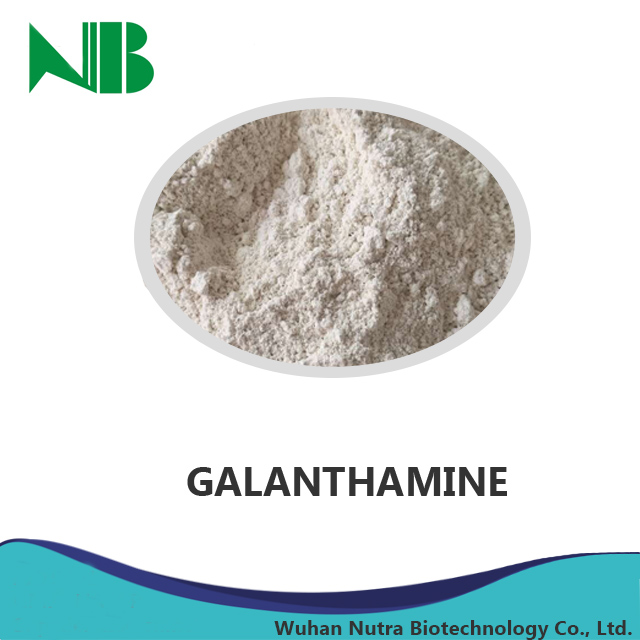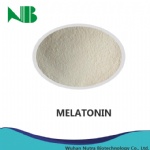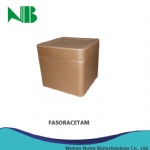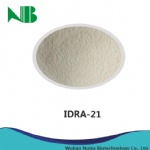Galantamine Hydrobromide
Product Description:
Product Name: Galantamine Hydrobromide
Synonyms: NIVALIN;NIVALIN, HBR;4A,5,9,10,11,12-HEXAHYDRO-3-METHOXY-11-METHYL-6H-BENZOFURO[3A,3,2-EF][2]BENZAZEPIN-6-OL HYDROBROMIDE;GALANTAMINE HBR;GALANTAMINE HYDROBROMIDE;GALANTHAMIDE HYDROBROMIDE;GALANTHAMINE HBR;GALANTHAMINE HYDROBROMIDE
CAS: 1953-04-4
MF: C17H22BrNO3
MW: 368.27
EINECS: 217-780-5
Galantamine (Nivalin, Razadyne, Razadyne ER, Reminyl, Lycoremine) is used for the treatment of mild to moderate Alzheimer's disease and various other memory impairments, in particular those of vascular origin. It is an alkaloid that is obtained synthetically or from the bulbs and flowers of Galanthus caucasicus (Caucasian snowdrop, Voronov's snowdrop), Galanthus woronowii (Amaryllidaceae) and related genera like Narcissus (daffodil), Leucojum aestivum (snowflake), and Lycoris including Lycoris radiata (red spider lily).
Studies of usage in modern medicine began in the Soviet Union in the 1950s. The active ingredient was extracted, identified, and studied, in particular in relation to its acetylcholinesterase (AChE)-inhibiting properties. The bulk of the work was carried out by Soviet pharmacologists M. D. Mashkovsky and R. P. Kruglikova–Lvova, beginning in 1951.The work of Mashkovsky and Kruglikova-Lvova was the first published work that demonstrated the AChE-inhibiting properties of galantamine.
The first industrial process was developed in Bulgaria by prof. Paskov in 1959 (Nivalin, Sopharma) from a species traditionally used as a popular medicine in Eastern Europe, and, thus, the idea for developing a medicine from these species seems to be based on the local use (i.e., an ethnobotany-driven drug discovery).
Galantamine has been used for decades in Eastern Europe and Russia for various indications such as treatment of myasthenia, myopathy, and sensory and motor dysfunction associated with disorders of the central nervous system. In the US, it is approved by the Food and Drug Administration for the treatment of Alzheimer's disease.
It is available in both a prescription form and as an over the counter supplement.
Research supported in part by the US Army has led to a US patent application for the use of galantamine and/or its derivatives for treatment of organophosphate poisoning. The indications for use of galantamine in the patent application include poisoning by nerve agents "including but not limited to soman, sarin, and VX, tabun, and Novichok agents". Galantamine was studied in the research cited in the patent application for use along with the well-recognized nerve agent antidote atropine. According to the investigators, an unexpected synergistic interaction occurred between galantamine and atropine in an amount of 6 mg/kg or higher. Increasing the dose of galantamine from 5 to 8 mg/kg decreased the dose of atropine needed to protect experimental animals from the toxicity of soman in dosages 1.5.times the dose generally required to kill half the experimental animals.
Synonyms: NIVALIN;NIVALIN, HBR;4A,5,9,10,11,12-HEXAHYDRO-3-METHOXY-11-METHYL-6H-BENZOFURO[3A,3,2-EF][2]BENZAZEPIN-6-OL HYDROBROMIDE;GALANTAMINE HBR;GALANTAMINE HYDROBROMIDE;GALANTHAMIDE HYDROBROMIDE;GALANTHAMINE HBR;GALANTHAMINE HYDROBROMIDE
CAS: 1953-04-4
MF: C17H22BrNO3
MW: 368.27
EINECS: 217-780-5
Galantamine (Nivalin, Razadyne, Razadyne ER, Reminyl, Lycoremine) is used for the treatment of mild to moderate Alzheimer's disease and various other memory impairments, in particular those of vascular origin. It is an alkaloid that is obtained synthetically or from the bulbs and flowers of Galanthus caucasicus (Caucasian snowdrop, Voronov's snowdrop), Galanthus woronowii (Amaryllidaceae) and related genera like Narcissus (daffodil), Leucojum aestivum (snowflake), and Lycoris including Lycoris radiata (red spider lily).
Studies of usage in modern medicine began in the Soviet Union in the 1950s. The active ingredient was extracted, identified, and studied, in particular in relation to its acetylcholinesterase (AChE)-inhibiting properties. The bulk of the work was carried out by Soviet pharmacologists M. D. Mashkovsky and R. P. Kruglikova–Lvova, beginning in 1951.The work of Mashkovsky and Kruglikova-Lvova was the first published work that demonstrated the AChE-inhibiting properties of galantamine.
The first industrial process was developed in Bulgaria by prof. Paskov in 1959 (Nivalin, Sopharma) from a species traditionally used as a popular medicine in Eastern Europe, and, thus, the idea for developing a medicine from these species seems to be based on the local use (i.e., an ethnobotany-driven drug discovery).
Galantamine has been used for decades in Eastern Europe and Russia for various indications such as treatment of myasthenia, myopathy, and sensory and motor dysfunction associated with disorders of the central nervous system. In the US, it is approved by the Food and Drug Administration for the treatment of Alzheimer's disease.
It is available in both a prescription form and as an over the counter supplement.
Research supported in part by the US Army has led to a US patent application for the use of galantamine and/or its derivatives for treatment of organophosphate poisoning. The indications for use of galantamine in the patent application include poisoning by nerve agents "including but not limited to soman, sarin, and VX, tabun, and Novichok agents". Galantamine was studied in the research cited in the patent application for use along with the well-recognized nerve agent antidote atropine. According to the investigators, an unexpected synergistic interaction occurred between galantamine and atropine in an amount of 6 mg/kg or higher. Increasing the dose of galantamine from 5 to 8 mg/kg decreased the dose of atropine needed to protect experimental animals from the toxicity of soman in dosages 1.5.times the dose generally required to kill half the experimental animals.
Links:
Copyright © Wuhan Nutra Biotechnology Co., Ltd. All right reserved















